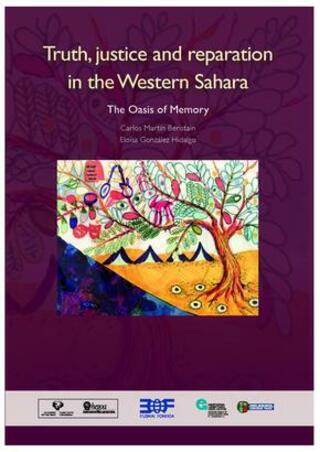

This summary was written with the difficult goal of condensing the report titled “The oasis of memory”, the complete version of which contains over 1000 pages in two volumes. The report includes an analysis of human rights violations in the Western Sahara since 1975 based on interviews and testimonies gathered from 261 victims. It also analyzes the impact on individual people, families and women, the forms of resistance of the victims, and, finally, the demands for truth, justice and reparation for victims as well as the responses from the state of Morocco.
As Nobel Peace Prize winner Adolfo Perez Esquivel points out, “In the research work that summarizes the ‘The oasis of memory’ report, Dr. Carlos M. Beristain tries to recover both the Historical Memory and the human rights situation in the Western Sahara, developing an approach that follows the methodology of the Truth Commissions in which he has participated, and combining the psychosocial approach that he contributed to the REMHI Commission in Guatemala, with the importance of gathering direct information and experiences from victims”.
The value of memory is in the transformation of life. This report is dedicated to Sahrawi victims and survivors who have made it possible with their courage and generosity.
The demands for truth, justice and reparation in the case of the Western Sahara
Needs and demands for reparation.
The right to reparation and relevant international standards.
Irreparability and the context of truth, justice and reparation measures.
Comprehensiveness in terms of reparation.
Consistency and hierarchy of reparation measures.
Moroccan state responses to human rights violations in the Western Sahara: the denial of truth.
Difficulties in researching on the Western Sahara.
Arbitration Committee and Sahrawi demands.
The setting up of the IER.
Exclusion of the Western Sahara in public hearings and collective reparations.
Lack of guarantees for victims and persecution during the IER’s work.
The struggle for truth.
The IER report and the list posted on the Internet.
An example of an inconsistent response to victims’ rights.
Exhumations and the right to grieve.
Recognition of injury: responsibility and respect for dignity.
The need for justice.
Genocide case and universal jurisdiction.
Disqualification of individuals responsible for human rights violations.
A system of justice that deals with the problems of the present.
Restitution of loss.
Restitution of territory and right of return.
Economic reparation and compensation.
Relationship between truth and economic compensation.
Health care: rehabilitation programs.
State and international responsibility to build trust.
Holding a referendum as reparation.
Protection of Sahrawi civilians.
The need to break with the past.
Collective memory as a preventive tool.
Memory in archives.
Human rights and a transformation agenda in the Sahara conflict.
Appendix. Meheris. A possibility of hope.
Presentation.
Relatives’ demands and exhumation.
Forced disappearances in the Western Sahara.
The MINURSO mandate.
Recommendations of the UN Working Group on Forced Disappearances.
International standards on exhumations and on the identification of remains.
Case Summary.
Lack of information and research, and responses that do not correspond to the truth.
The discovery of the mass graves.
Description of the work carried out in the mass graves.
Research Findings: collective case, cause of death and identification of the disappeared.